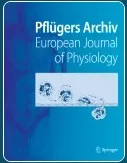Tobias Elst1 · Sven Weidner1 · André Tomalka1 · Daniel Hahn2,3 · Florian Kurt Paternoster4 · Wolfgang Seiberl5 ·Tobias Siebert1,6
1 Motion and Exercise Science, University of Stuttgart, Stuttgart, Germany
2 Human Movement Science, Faculty of Sports Science, Ruhr University Bochum, Bochum, Germany
3 School of Human Movement and Nutrition Sciences, University of Queensland, Brisbane, QLD, Australia
4 Biomechanics in Sports, Department of Sport and Health Sciences, Technical University of Munich, Munich, Germany
5 Human Movement Science, University of the Bundeswehr Munich, Neubiberg, Germany
6 Stuttgart Center for Simulation Science, University of Stuttgart, Stuttgart, Germany
Abstract
Muscle function is essential for generating force and movement, with stretch–shortening cycles (SSCs) playing a fundamental role in the economy of everyday locomotion. Compared with pure shortening contractions, the SSC effect is characterised by increased force, work, and power output during the SSC shortening phase. Few studies have investigated whether SSC effects transfer across consecutive SSCs. Therefore, we investigated SSC effects over three consecutive SSCs in skinned rat muscle fibres by analysing the isometric force immediately before stretch onset (Fonset), the peak force at the end of stretching (Fpeak), and the minimum force at the end of shortening (Fmin), along with mechanical (WorkSSC) and shortening work (WorkSHO) at different activation levels (20%, 60%, and 100%). Each SSC was followed by an isometric hold phase, allowing force to return to a steady state. Results indicated an increase in both Fpeak (20.3%) and WorkSSC (60.9%) from SSC1 to SSC3 across all activation levels tested. At 20% and 60% activation, Fonset, Fmin, and WorkSHO increased (range: 4.5–28.5%) from SSC1 to SSC3. However, at 100% activation, Fonset and WorkSHO remained unchanged, while Fmin decreased (− 8.5%) from SSC1 to SSC3. These results suggest that the increase in SSC effects at submaximal activation may be primarily due to increased cross-bridge forces. The absence of increases in Fonset, Fmin, and WorkSHO at 100% activation suggests that increases in Fpeak and WorkSSC may not be attributed to increased cross-bridge force but could instead be caused by additional effects, possibly involving modulation of non-cross-bridge structures, likely titin, and their stiffness.
